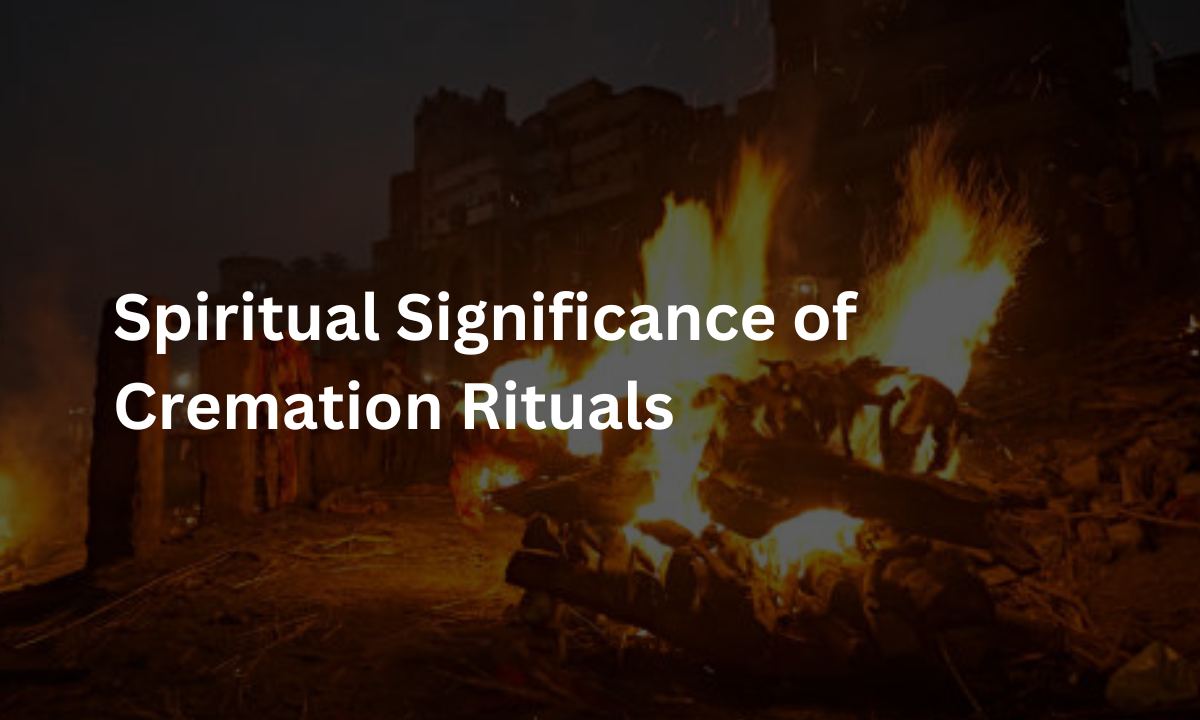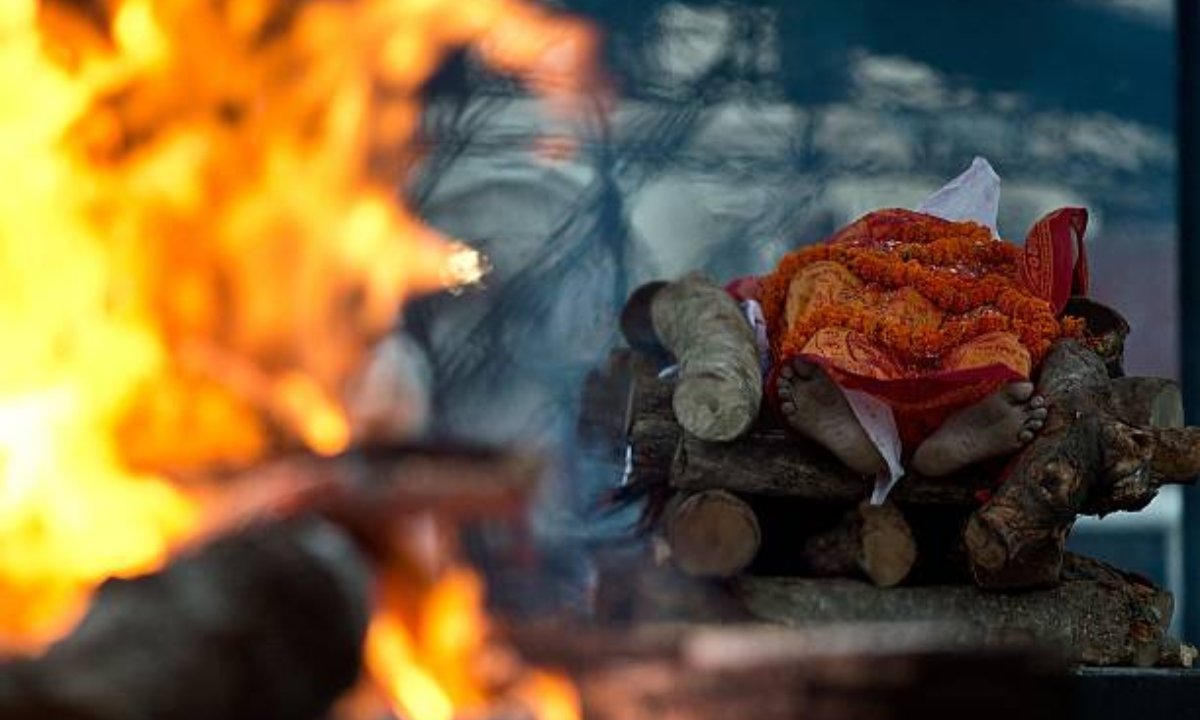Hinduism is one of the most ancient and profound religions, offering guidance on every aspect of life and beyond. It emphasises the continuity of the soul, which transcends the temporary existence of the physical body. The Hindu cremation ceremonies link strongly to religious teachings as they both memorialise departed loved ones and guide souls through their afterlife journey.
A detailed examination of these religious rituals explores their spiritual essence alongside the sanctuary of the Banashankari crematorium which upholds sacred dedicated rituals.
Understanding the Concept of Death in Hinduism

Death functions as a transformative experience along a soul’s ongoing spiritual path. According to Vedic teachings a soul possesses eternal existence while searching for ultimate freedom which is called moksha. The physical body is considered temporary and is left behind during this transition. In this context, cremation is not just a way to dispose of the body; it is a sacred process intended to assist the soul on its continued journey.
Why Cremation?
Within the Hindu religion, multiple factors influence people’s choice to prefer cremation. Hindu teachings begin with the understanding that human bodies become temporary through time.
The Hindus see fire as a tool that purifies matter while enabling souls to advance spiritually. Hindu followers burn their bodies through cremation to let the soul free itself from earthbound bonds so the soul will avoid resting on Earth.
Stages of Cremation Rituals in Hinduism
A Hindu funeral is divided into multiple sacred rituals and symbolic ceremonies showing spiritual significance throughout each stage.
1. Preparation of the Body
The cremation procedure consists of cleansing and dressing the deceased body before dressing it in clean white garments. White symbolises peace and purity. People build the deceased on either a wooden stretcher or bier after which they begin chanting prayers known as mantras. The cleansing rituals of this step both cleanse the body and make it ready for funeral ceremonies.
2. The Procession to the Crematorium
During a cremation ceremony, the body travels to its destination by close male relatives who conduct sacred chants including the Ram Nam Satya Hai (the name of Lord Rama is truth). A journey has both personal and religious value as it makes people think about their brief stay on Earth. Cremation services at BBMP crematorium function as an official location for honouring the passing of life through religious practices.
3. The Lighting of the Funeral Pyre
The deceased body is placed on a wooden structure at the cremation site. A male relative, beginning the funeral pyre, is lit by the elder son, serving to send the deceased person’s body—the earth, fire, water, and air—along with space from this world into the cosmic realm. Whole verses devoted to sacred mantras remain active in a continuous pattern to invoke deity powers while guiding the departed soul toward the afterlife during this period of mourning.
4. Post-Cremation Rituals in Hinduism
Once the body completes burning the family takes responsibility for gathering primarily ashes together with bone fragments. People immerse the ashes of an individual in sacred waterways called Asthi Visarjan in the Ganges to signify soul purification. The “Banashankari crematorium” continues to receive respect from families who bring their dead’s ashes to a holy water source for final interment.
Symbolism Behind the Rituals
The entire cremation sequence contains purposeful connotations throughout the entire practice. The firing step within the ritual functions as both a cleansing force and a liberation method. Mantras establish a spiritual domain during rituals by protecting against harmful forces as an inner soul progression is blessed. Throughout the Hindu teaching philosophy, the ultimate action of immersing the ashes serves to unite the individual self with the universal self.
Hindu cremation ceremonies integrate rebirth beliefs with ethical actions that spark the cycle of karma. During death ceremonies, the living seek to remove karmic obstacles of the deceased which sets them on a path toward enhanced rebirth possibility and ultimate freedom from the cycle of life and death.
Importance of Cremation Grounds
In Hindu tradition cremation sites function as sites of spiritual sanctity. Such locations serve both as practical areas for post-death rituals and hold spiritual meaning for stewards. The Bangalore region includes one of the most famous cremation sites that is named “Banashankari Crematorium”. The crematorium maintains traditional practices as it integrates urban requirements and green concepts by operating electric cremation facilities.
The Role of Community and Family
According to Hinduism death creates a community response where family and society unite for joint observances following its occurrence. These ceremonies bring relatives and neighbors together with friends who support the grieving family. The combined mourning process and ritual performance strengthen social connections because they act both as life lessons and a representation of mortality.
The family fulfills sacred antyeshti offerings when performing these rituals to honour their departed loved one. By strictly following Hindu cremation rituals believers expect to ease both the anguish of survivors and grant peace to lost spirits.
Adapting Rituals in Modern Times
Traditional rituals stay unchanged yet modern living has introduced alterations to these practices. The “Banashankari crematorium” together with other urban crematoriums follows changes to satisfy growing numbers of people alongside environmental protection needs. Electric cremation services now gained popularity as an environmental solution that replaces traditional funeral burning practices.
Traditional spiritual values remain unchanged throughout these modifications of the ancient rituals. The transmission of everlasting traditions occurs when families continue family rituals through communal rhythmic chanting, inheritance honours and sacred river ash burial.
Conclusion
The Indian cremation rituals in Hinduism serve functions that transcend grieving ceremonies. Hinduism practices these holy ceremonies as spiritual totems that function as both honoring rituals and navigation tools for the soul toward emancipation. These customs show us the foundational spiritual elements of Hindu views about life and death which become more apparent to us when we understand their meaning.
Through their role as the “Banashankari crematorium,” these sacred spaces become repositories for Hindu traditions enabling families to perform their holy rituals. Through these activities which exist from ancient periods into present-day cities, Hinduism maintains its deep wisdom about the everlasting soul’s voyage.
As a trusted provider, Beleiv delivers dignified professional cremation services in Bangalore while providing families with comprehensive support in their period of need.




